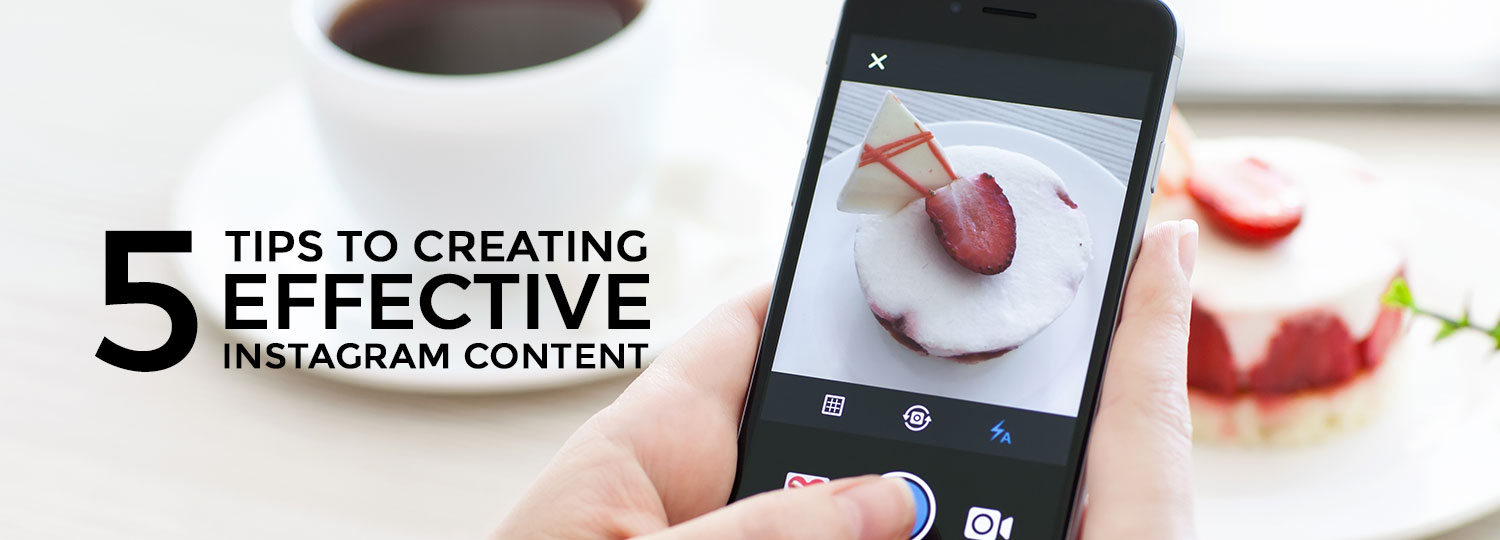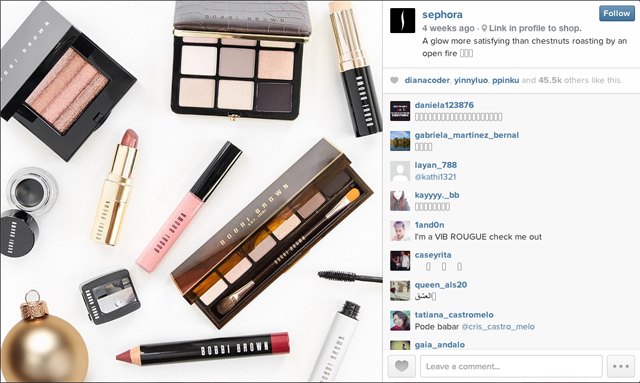Amassing 1000 followers on any social media network is likely to be a feat for numerous start-ups competing to be recognised by consumers in the digital world. However, the arrival of Instagram and its legion of new sign-ups per day (300 million accounts and counting) is one of the most promising recent developments for new companies to get heard and be known.

As the saying goes, “a picture is worth a thousand words”. Thankfully, the universally known saying is not without any empirical backing and support. With about 40% of people responding better to visual information than plain text, Instagram is a sure way of getting your visual messages across in a timely and effective fashion.
How can that be done?
#1 Ingenuity
If the information you publish can be obtained with a quick Google search, chances are, users would gloss over your posts. Plus, this move would deter them from following your account as the images are not entirely fresh, new or exciting.
IKEA, one of the most coveted companies in the marketing game, is no stranger to rolling out viral advertisements worldwide. Its latest addition, IKEA PS, is an ingenious way of showcasing 34-piece designer collection to its Instagram users. Mapped like a website, followers will be directed to the accounts of respective products that are tagged on each image. Watch the video to find out more.
#2 Trust
Prefabricated information, especially from company Instagrams, is generally off-putting. Not restricted to 140 characters, nor limited by any kind of monetary budget, Instagram serves as a personal and trusted platform for consumers to receive input or feedback regarding a particular product. When done right, the emotional resonance and personal touch heightens the trustworthiness of the product and more significantly, the company as a whole.
One of the ways to get heard or be seen is by engaging influencers within or without the country. The trust factor is visibly enhanced when a beloved celebrity, a notable figure in the industry or even customers are featured on Instagram posts to promote a particular product/service.

It remains imperative for companies not to fall into the trap of utilising Instagram as a form of the online catalogue for showcasing their products. From giveaways, tutorials to product launches, Sephora has successfully leveraged on Instagram as a viable avenue to engage with digital consumers everywhere. This level of trust is reflected through the high levels of positive engagements on every post. On top of that, having acquired over 2 million followers, the personal touch of the Instagram is noticeably effective with each image amassing an average of 20,000 likes each.
#3 Branding
To increase brand consciousness: company values, reputation and overall image have to be consistent across all digital platforms. Not only do they reflect professionalism, but coherence and a strong voice for the company that can then be universally recognised are also equally vital.

A prime example would be National Geographic’s account that has a massive 40 million-strong following on Twitter, Facebook, and Instagram! Capitalising on visually appealing content and exceptionally photographed images that mirror the National Geographic brand, the account displays a dramatic interaction between a human being and their natural environment.
Providing followers succinct details of the images, Nat Geo’s posts are akin to the identity of the magazine. This not only engages the users but speaks volumes about the brand’s desire to uphold a singular identity across various digital and print channels.
#4 Relevancy
It is vital for companies to strike a fair balance between formality and spontaneity (at least the semblance of it) when on Instagram. As aforementioned, users are inclined to engage and interact when a particular content strikes a chord; from current events to the user’s social environment. As such, a much more personal relationship between consumer and brand can be forged.

Last holiday season, LEGO – much loved by the young and the young at heart – launched an exclusive holiday series by rolling out Christmas themed videos and images via a countdown method. The simple yet effective countdown concept creates excitement and highlights LEGO’s main objective of bringing fun-filled cheer to children worldwide. Yet fundamentally, the timing of this campaign espouses the idea that LEGO remains to be the perfect gift for children everywhere since 1932.
#5 Creating a community
The use of #hashtags has certainly overtaken our lives. Besides gaining more coverage on a certain topic, idea or product, hashtags can be used to create a sense of togetherness among individuals. With shared interests and passion, a sense of belonging can be nurtured and tapped upon by marketers and companies alike.
One of the most successful campaigns to circulate last year is #mycalvins with almost 65963 posts found upon search. Calvin Klein has even created a microsite that instantly uploads images that are tagged with #mycalvins.
“There was a resurgence of references to 90s ‘logo-mania’ among style bloggers and celebrity sightings, which intersected with the increasingly ubiquitous phenomenon of posting selfies in Calvin Klein Underwear. #Mycalvins not only offered a way to aggregate this activity, but it also authenticated pre-existing behaviour in a way that directly connected fans and influencers with the brand,” says former Executive Vice President of Calvin Klein, Malcolm Carfrae.
The campaign’s winning factor lies in the fact that it draws upon international users (not limited to celebrities, models or bloggers) by encouraging them to publish selfies with the classic Calvin Klein logo waistbands revealed. This approach incorporates both trusts (see #5) and branding factors (see #3), explaining its enormous success as a campaign.
With the 5 aforementioned tips in mind, what are you waiting for? Step up your Instagram game today!


